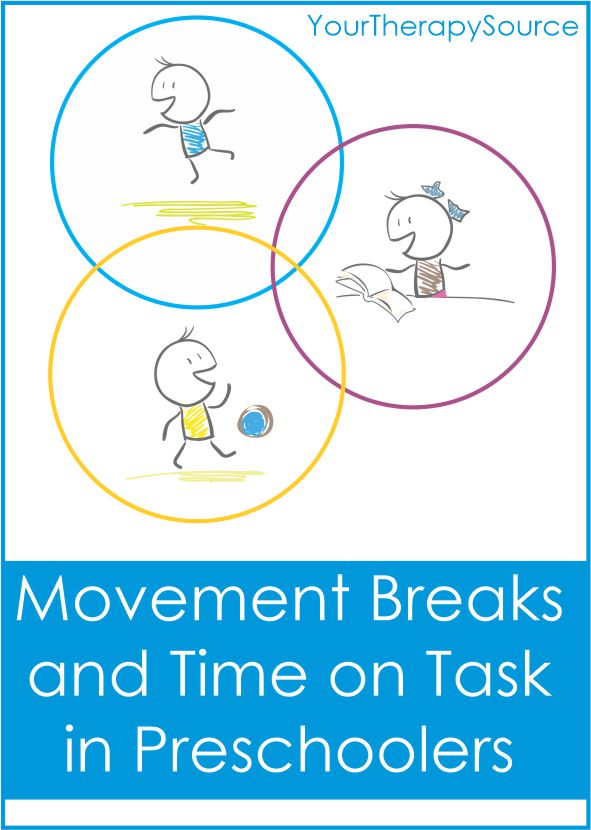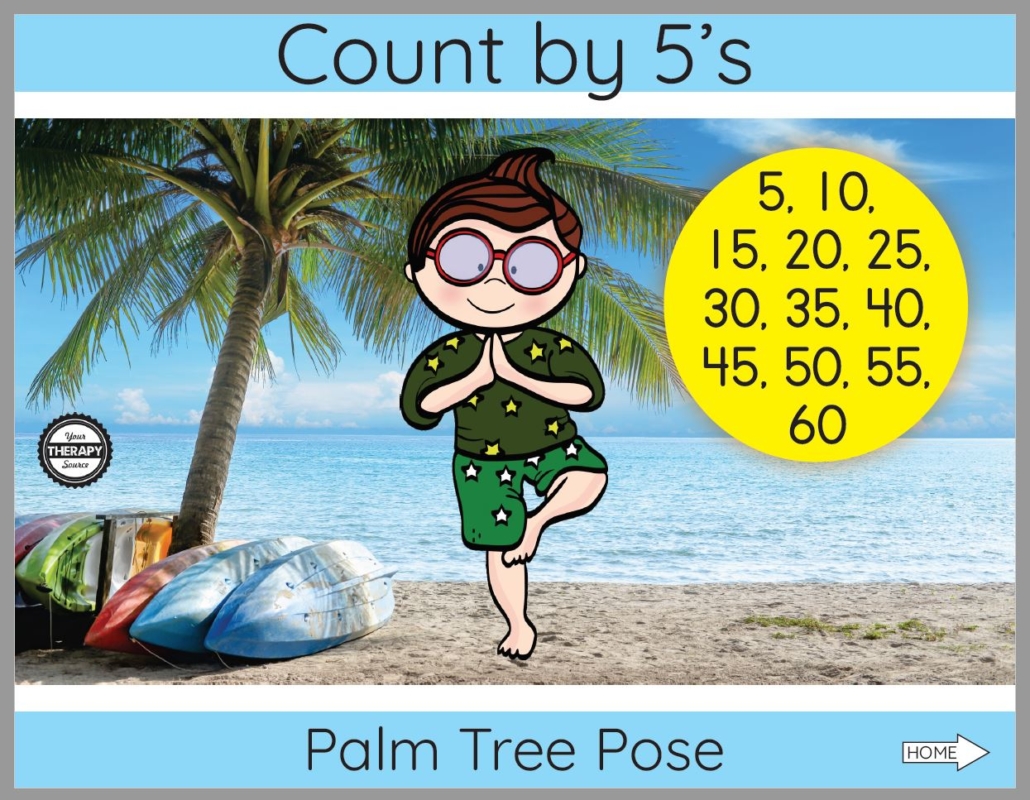Movement Breaks and Time on Task in Preschoolers
Movement breaks in the classroom and at home in the early years are so important for healthy child development. Not only do movement breaks increase daily physical activity time, they have also been shown to improve time on task, motor skills, social-emotional skills and academic skills. During the preschool years, movement breaks are easy to implement throughout the day.

What Does the Research Say on Movement Breaks for Preschoolers and Time on Task?
Pediatric Exercise Science published research on 118 preschool students who participated in a 10 minute teacher implemented classroom based activity break for 2 days (study was over 4 days – 2 days the activity break was conducted and the other 2 days was regular instruction). Physical activity was monitored via accelerometry. Time on-task was measured by direct observation.
The results indicated the following:
1. the 10 minute activity breaks resulted in a higher percent of moderate-to-vigorous physical activity (MVPA).
2. activity breaks also encouraged more on-task behavior after the activity break.
3. the students who were the most off-task before the break improved on-task behavior by 30 percentage points.
The researchers concluded that teachers may improve time on-task after an activity break for preschoolers, especially in children who are the most off-task.
Reference: E. Kipling Webster, Danielle D. Wadsworth, Leah E. Robinson. Preschoolers’ Time On-Task and Physical Activity During a Classroom Activity Break. PES Volume 27, Issue 1, February. doi.org/10.1123/pes.2014-0006

Movement Breaks Help with Self-Regulation in Preschoolers Too!
A research study in Trends in Neuroscience and Education, investigated movement breaks and self-regulation in preschoolers. The study included 72 preschoolers who completed a quantity estimation task before, following, and one week after engaging in either a 20-min physically active or sedentary lesson.
To determine the benefits of the movement breaks heart rate, pedometer step counts, and off-task behavior was recorded.
The results of the study indicated:
- physical activity did not interfere with learning.
- 58% reduction in off-task behavior following a physically active lesson.
- 1900% increase in steps during the physically active lesson.
The researchers concluded that providing physically active lessons instead of sitting for extended periods of time in early childhood classrooms reduces sedentary behavior and improves self-regulation while not interfering with learning.
Reference: McGowan, A. L., Gerde, H. K., Pfeiffer, K. A., & Pontifex, M. B. (2021). Physically active learning in preschoolers: Improved self-regulation, comparable quantity estimation. Trends in Neuroscience and Education, 100150.
Need a Physically Active Lesson Plan?
Skip counting is an important skill for students to learn to practice math facts. Add movement to your skip counting with this interactive Yoga Skip Counting brain break. You will get Google Slides version, Powerpoint version, Interactive PDF version in full color, AND black and white PDF version to print!
Need Physically Active Breaks for Your Classroom or Home?








